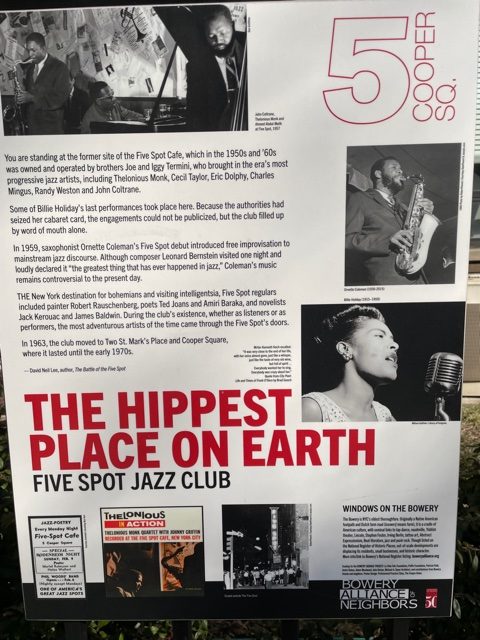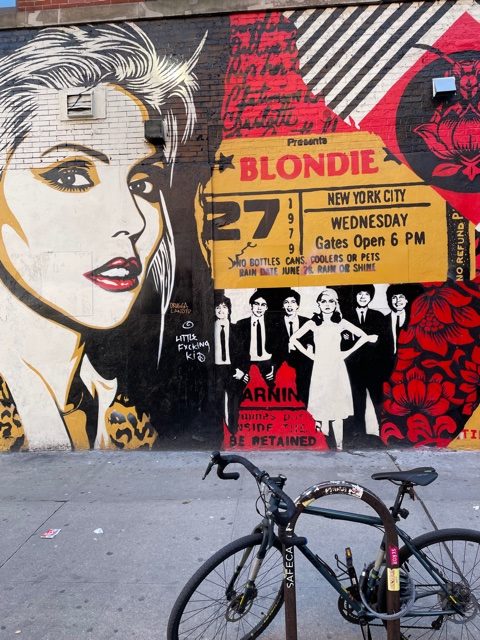
Sunday, February 27
On a metal fence that runs along the Bowery between 4th and 5th Streets, there is a sign reading “The Hippest Place on Earth.” Nothing looks very hip: the fence borders a nondescript, even ugly, urban-renewal-era apartment building. But the reference is to the Five Spot Jazz Club, which stood there between 1956 and 1962.
This was the place where pathbreaking composer and pianist Thelonious Monk played two extended bookings in 1957 and 1958. The following year, the legendary free jazz saxophonist Ornette Coleman appeared with his group that included Don Cherry, Billy Higgins, and Charlie Haden. (One member of the fascinated crowd: Leonard Bernstein.)
Also not far away on Bowery: the site of the Tin Palace, a jazz club where many top-flight musicians (David Murray, James Blood Ulmer) of the 1970s appeared; and CBGB, a punk-rock club famous for its exceptional grime and as a venue for the likes of Talking Heads, the Ramones, and Blondie.

All over lower Manhattan there are ghosts of once-vital music venues. On 14th Street near Third Avenue today stands a New York University dormitory called Palladium. That’s on the spot where there was once a large music hall of the same name. Before that, the building was known as The Academy of Music, which became an important hot-spot for Latin jazz and dance bands.
Across 14th was Max’s Kansas City, located first on Park Avenue South and, in a later incarnation, on Third Avenue. The first of these was a hangout for the Andy Warhol crowd, while the second was, like CBGBs, a punk-rock venue where Debbie Harry once worked as a waitress.
And on East 11th Street there’s Webster Hall, which was briefly known as The Ritz during the 1980s. Built in 1886, it was at one point a meeting place for leftist and anarchist gatherings before becoming, in the 1910s, a locus for bohemian masquerade balls that drew the likes of Marcel Duchamp and F. Scott Fitzgerald. Today, it’s a large rock music club.
I look forward to going to hear live music again…someday.
I wandered past several of these places on Tuesday as I strolled down to the sporty clothing store REI, which is located in the Puck Building south of Houston. They didn’t have the socks I wanted but at least I got a chance to survey and photo a lot of previously unseen murals now gracing the walls of downtown buildings.

Dinner: beef stew and a green salad.
Entertainment: Harold Lloyd silent shorts and episodes of the Scandi thriller Conspiracy of Silence from streaming service Topic.





